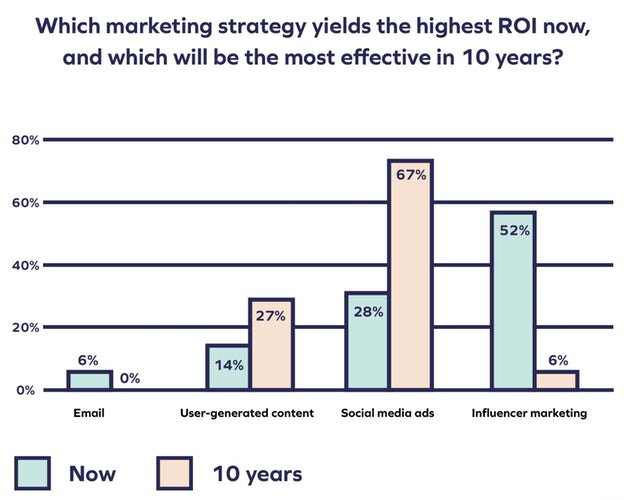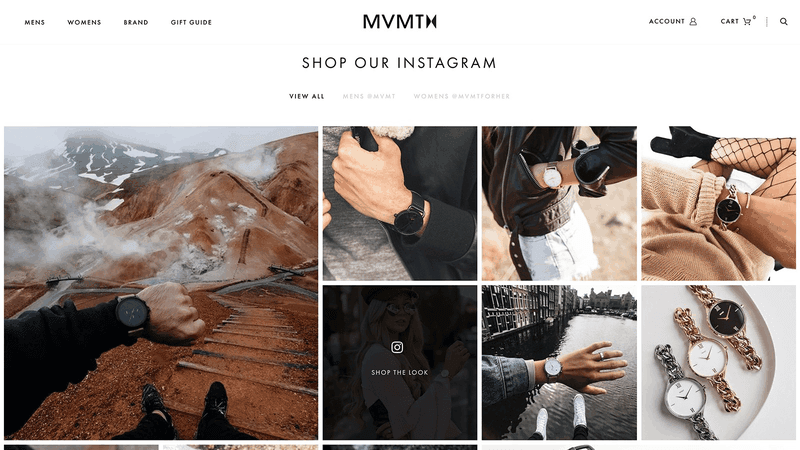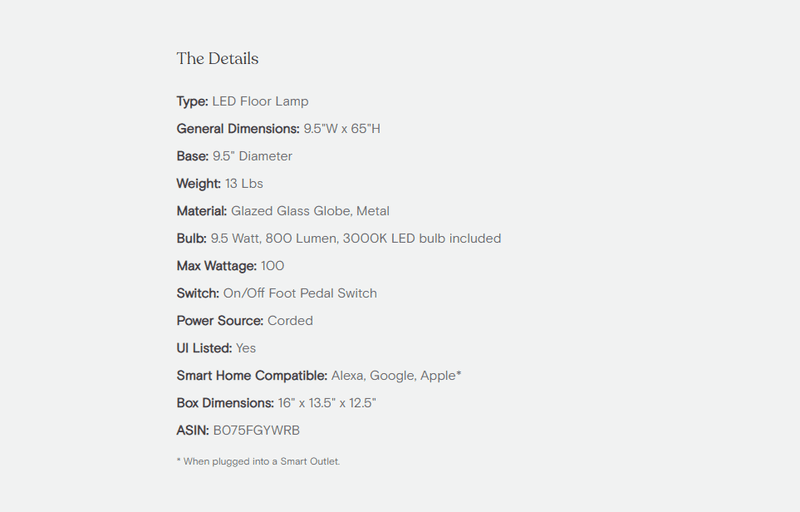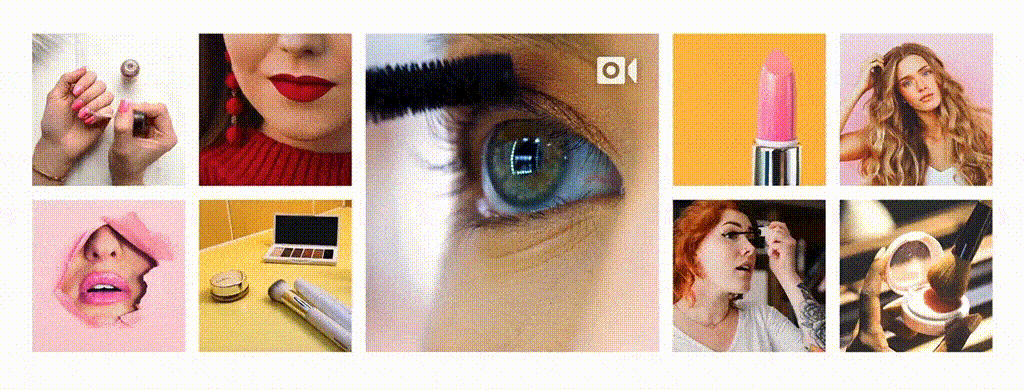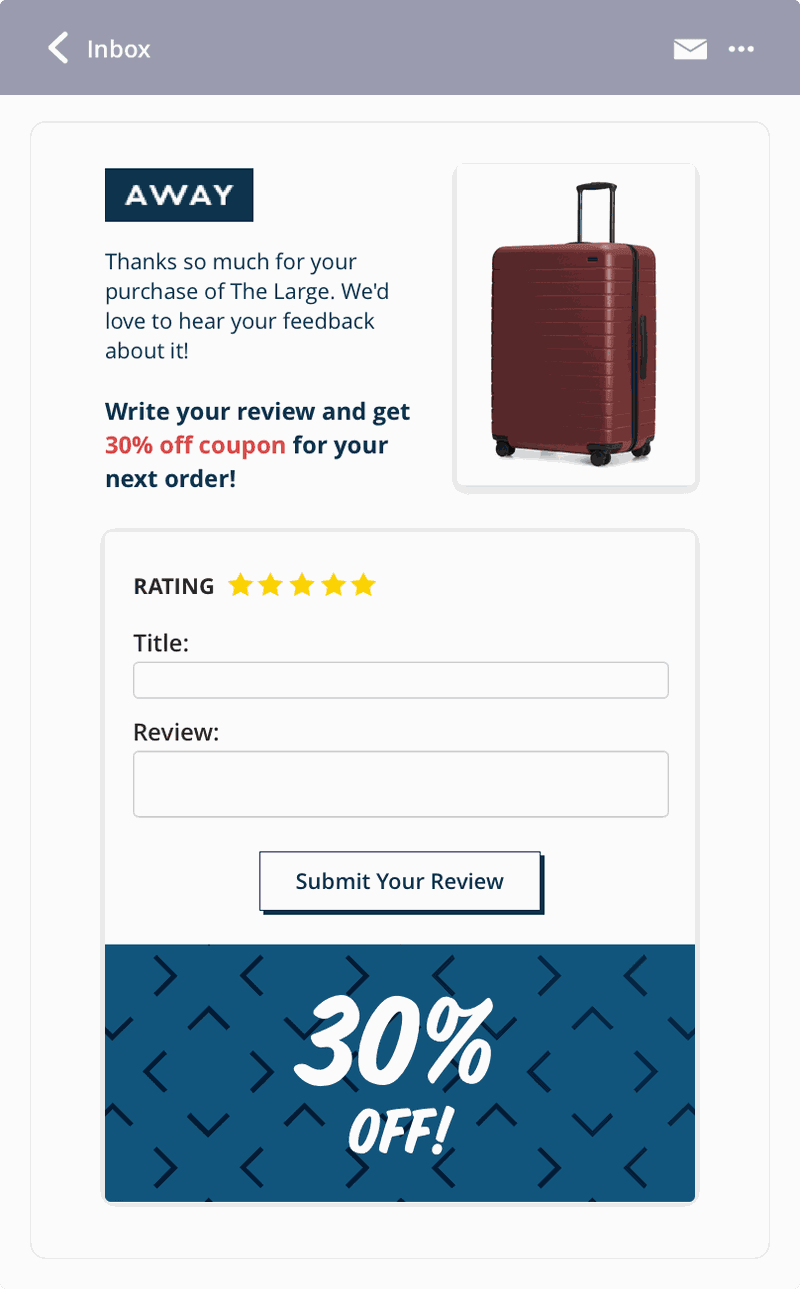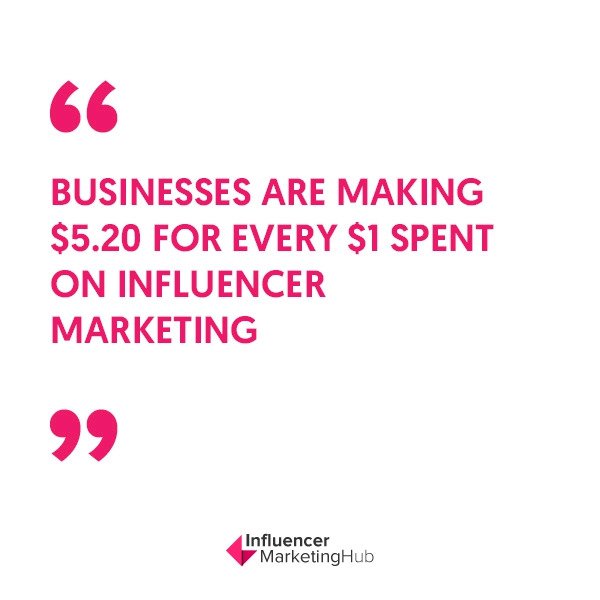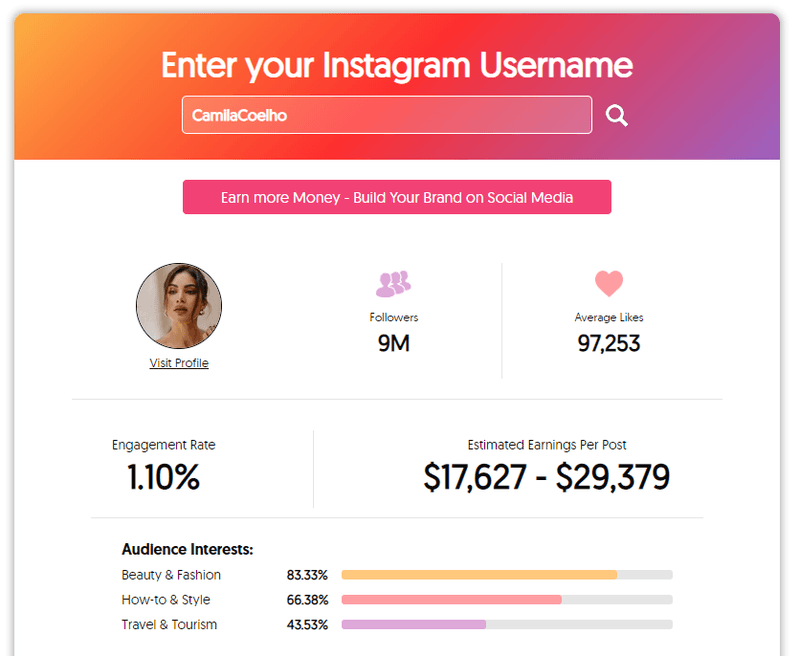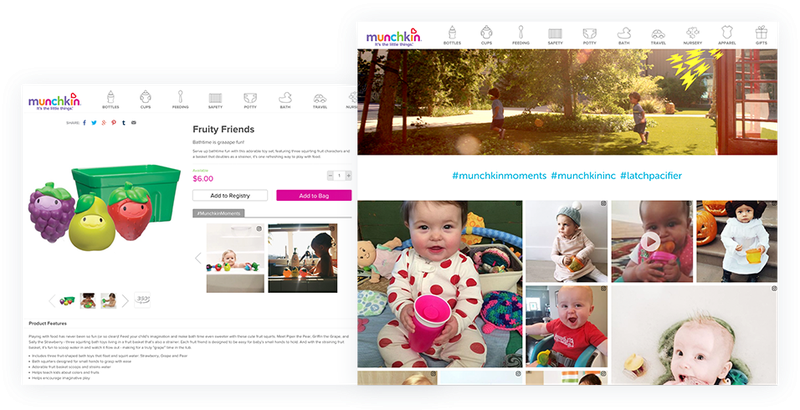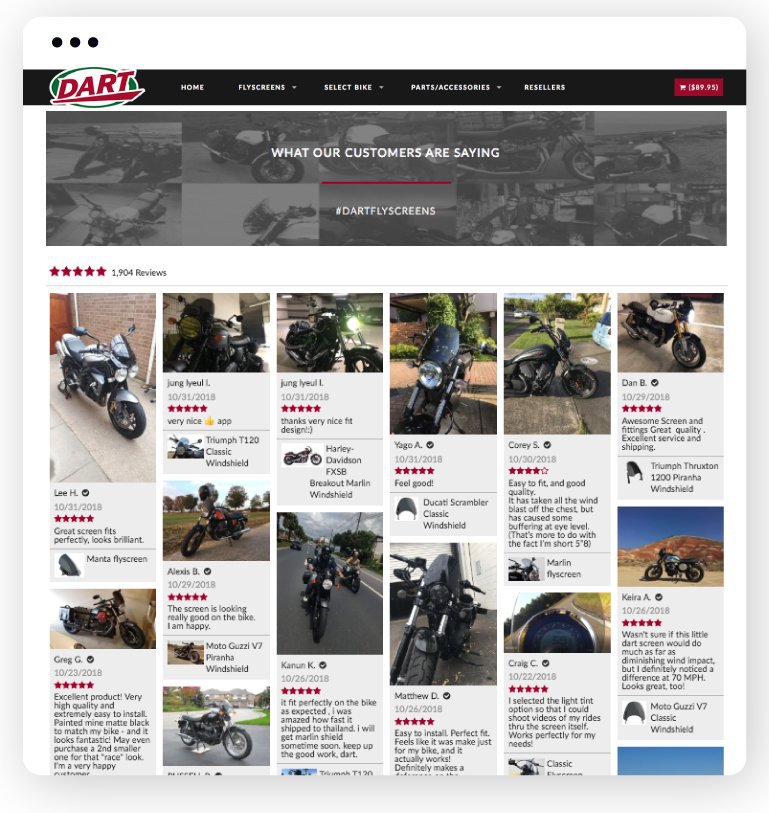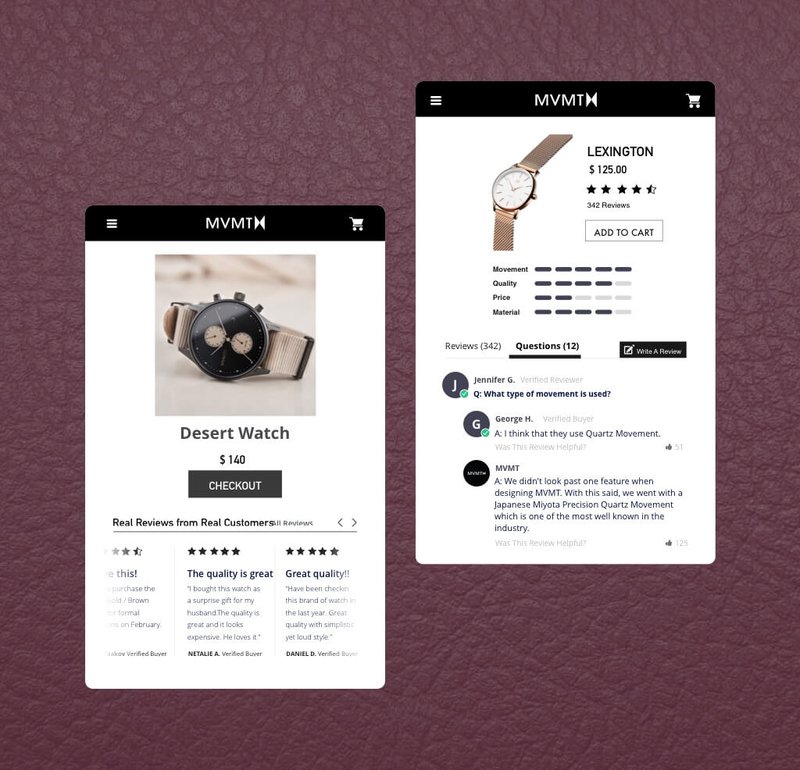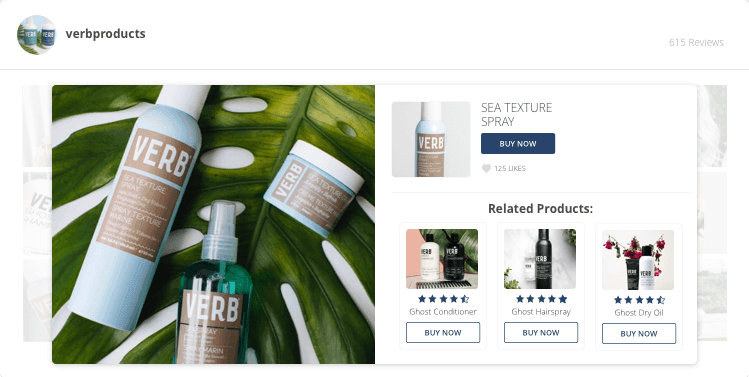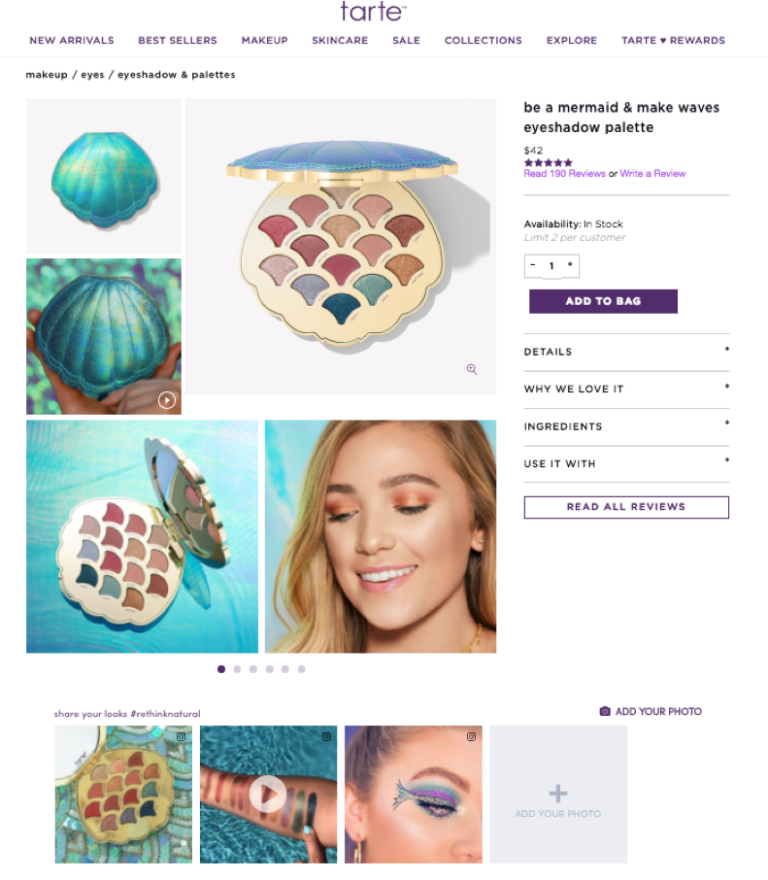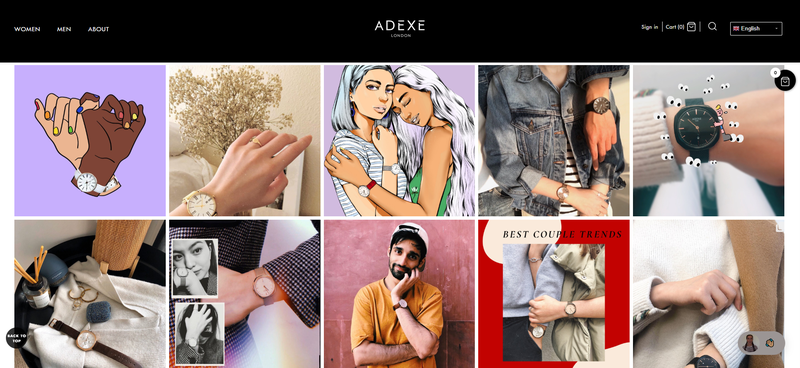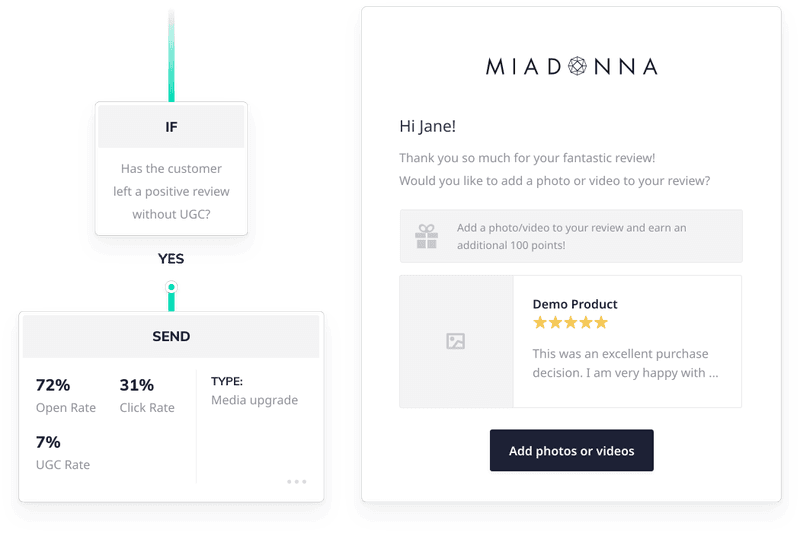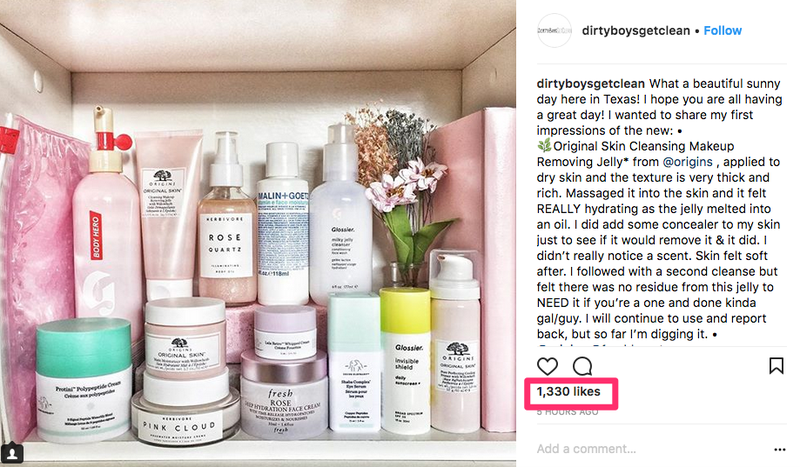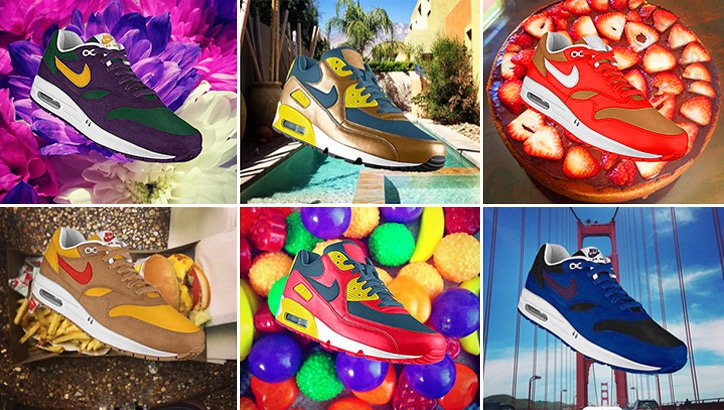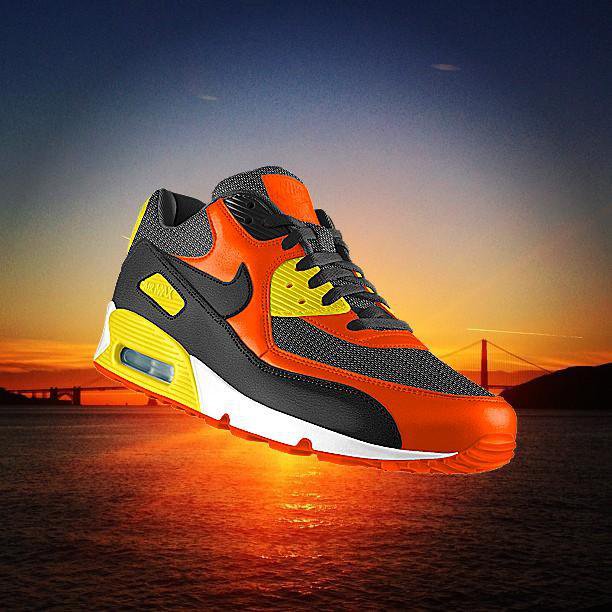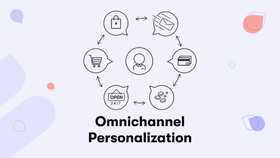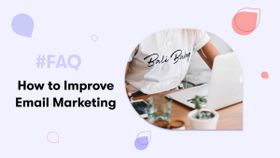The Ultimate Guide to UGC Campaigns for eCommerce
Top tools, platforms, strategies, and step-by-step instructions on how to absolutely rock at UGC and grow your brand. This is LuluLemon, Everlane, and Away do.
Updated December 17, 2023.
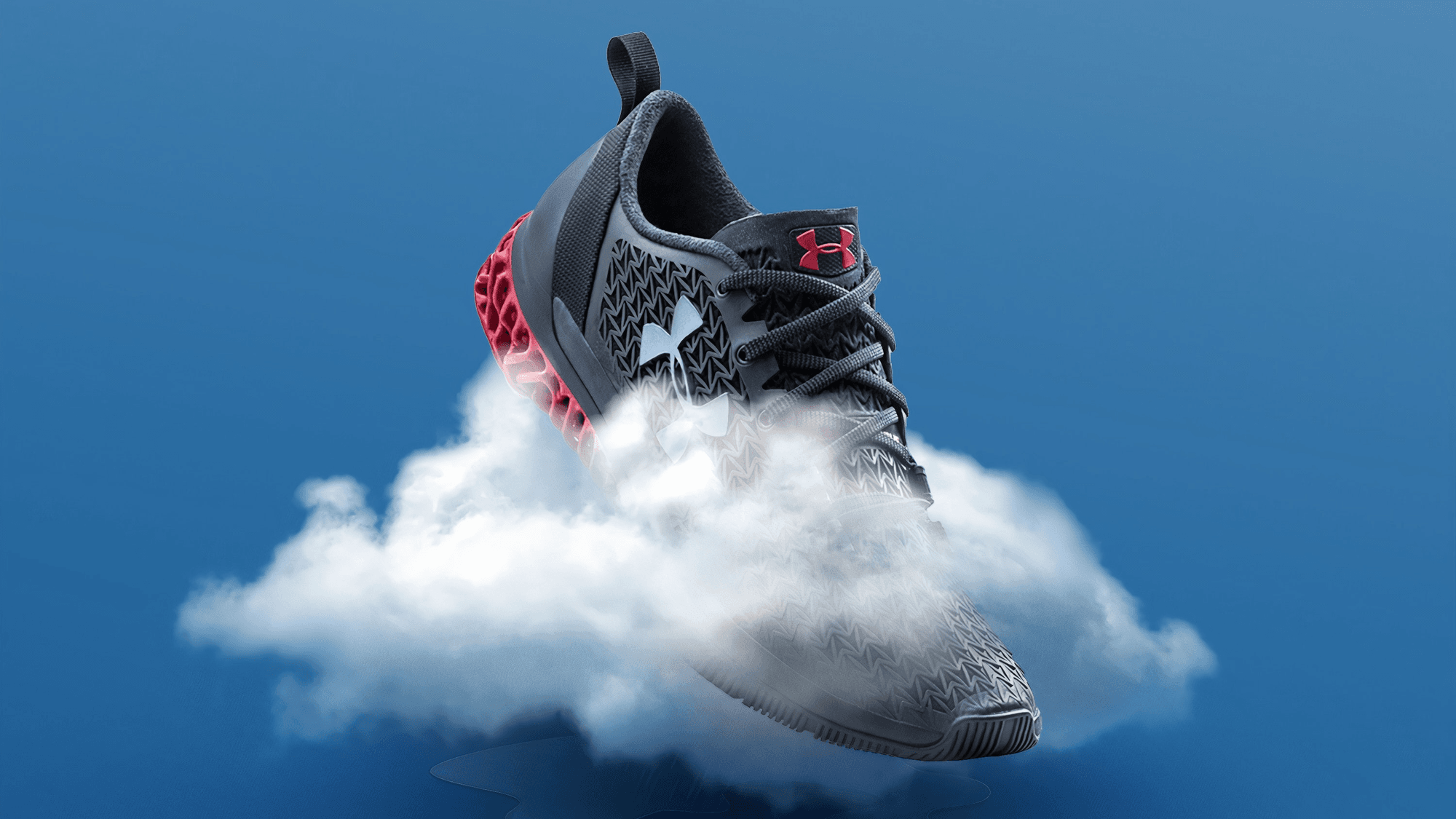
One of the most powerful ways to promote your products is by showing your customers using them. This is why visual social media platforms like Instagram are such popular platforms for shoppers and eCommerce marketers.
In fact, studies show that 86% of women use social media for shopping advice. That’s a ton of people that go on social media to specifically look for their peers’ advice on which products to buy.
That’s why user-generated content or UGC has become such an effective and viral way for brands to promote their products and increase sales.
So if you’re not using UGC yet then now is the best time to get into it. And if you already are getting images from your customers, this guide will show you how to do it even better to grow your sales and position your brand for long-term growth.
Let’s dive in.
What is user-generated content?
User-generated content, alternatively known as user-created content, is any form of content, such as images, videos, text, and audio, that has been posted by users on online platforms such as social media and wikis.
In fact, experts predict that UGC is going to be the most cost-effective strategy in 10 years.
Why is UGC so important?
User-generated content is most well-known for its branding benefits for companies, like those catchy influencer shots on Instagram and YouTube. In reality, UGC started as a better way to build businesses.
Companies like IMDB, Wikipedia, and YouTube were entirely based on user-generated content and were able to completely redefine the way we use the internet.
That’s a cool way to think about it, but let’s focus back on the marketing aspect. Studies show that 55% of consumers trust user-generated images more than any other form of advertising or marketing. According to AdWeek, 85% of users say that UGC is more influential in their buying decisions than the images and videos that the brand itself creates.
85% of users say that UGC is more influential in their buying decisions than brand-generated photos or videos
Here are several of the top reasons that marketers use UGC to grow their brands and meet key KPIs.
The benefits of user-generated content
There are so many benefits, here are just a few.
1. Images are more engaging than text
When was the last time you read a blog post with no pictures?
When was the last time you picked up a book and didn’t look at its cover first?
You know what I’m getting at.
Content has to be visual to be memorable.
And it’s especially true for product reviews. Seeing a picture of the product in the customer’s house is much more powerful than reading about it. It paints a picture, it shows an example of the product in use, and most importantly, it often shows the smiling customer themselves.
That’s why instead of having those old boring text reviews, add some spice to your product pages and homepage by adding UGC images and visual reviews.
Remember, everyone judges books by their covers, so spicing up your product “covers” is crucial.
2. UGC shows the product in use
We touched upon this in the last point but it’s so important that we need to emphasize it again. Let’s say that you’re a lighting company and you sell all kinds of floor lamps. When I see a picture of a floor lamp I immediately have the following questions pop in my brain:
-How tall is the lamp really? -Is it taller/shorter than it looks? -How bright is it?
At this point, I have 2 options.
Option 1 - I can scroll down to the detailed description, look at the specs of the lamp, and go measure my space.
Or...
Option 2 - I can scroll down to the user images or reviews and see what this lamp looks like in action.
So instead of looking at the written specs I can see the same information visually and get a much more powerful impression of the product. Of course, the specs are still crucial but the user images help the user create that emotional connection with the product that they are looking for before they start digging into the specs.
It’s essential for brands to get really good product images to make the user’s shopping experience easier. This is also the reason why the big brands are so specific about which influencers they work with because they want to portray their product in a very specific light (pardon the pun).
So remember, a visual impression trumps the written word, any day, and you need to show your product in action.
A visual impression trumps the written word, any day.
On to the next benefit of UGC.
3. The viral social media component
User-generated images have the potential to “go viral” which just means that they can be shared by a large group of people on social media. While no one is eager to share your 3-paragraph rant about your shopping experience, people are very likely to share an engaging video or image about a product unboxing.
And if these images all use the same catchy hashtag and are made around one central message then it becomes even more powerful for your brand.
Take this campaign for example. Apple launched $700 wheels recently and Unbox Therapy did a video (several videos actually) featuring these wheels, getting over 8 million views and 54,000 comments.
4. UGC enhances word of mouth
Another benefit of UGC is that enhances one of the most powerful channels that your business has - word of mouth. Consumers are more likely to purchase a product based on a recommendation from a friend and often these referred customers spend more and become eager ambassadors themselves.
How do you do this in practice? Let’s say that your ideal target market is downtown Manhattan. You can find and pick out specific influencers in that neighborhood and their posts will be seen by your target audience, by the residents of that neighborhood through the use of local hashtags.
5. UGC provides a great way to incorporate video
A really cool feature of UGC is that it allows you to take videos that your customers have made and display them on your site. This way they are more likely to be seen by visitors with high purchase intent and will help you improve your conversions.
Lots of brands have video reviews that they post on their sites and video is definitely an even more engaging format than images.
As you can see, UGC improves branding, conversions, marketing, and sales. That’s a magical formula if I’ve ever seen one.
So how do you actually get your customers to create their own images of your product?
Ways to get UGC
There are several great ways to get users to post their own content - you could ask for it, automate your reviews-gathering process, run a giveaway, or use influencers.
Let’s look at each one of these ways.
Ask for it
The simplest way is to just ask for it.
Create a campaign around a specific product or message, pick a hashtag, and politely ask your customers to create images using that message/hashtag. You can do this via email, a Messenger blast, a push notification, or even a physical insert in your packaging.
The more consistent you are with making this campaign part of your branding and marketing strategy the better your results will be.
Here’s an incredible email from Bellroy that asks customers to create content in a very subtle and organic way.
Automate your review gathering process
An even better way to do this is by automating your process of asking for reviews. You can use a tool like Yotpo or Judge.me to create automatic email flows that go out to every new customer and ask them to leave a review of your product.
You can use Loox to ask for photos or video reviews and automatically display them on your product or category pages.
Run a giveaway
A giveaway is another great way to get user-generated content.
You can make your UGC campaign into a giveaway and get a group of influencers to publish images of your product promoting the giveaway, on the same day. That way users will be more likely to see it and will then respond with their own photos of your product.
Speaking about influencers, this brings me to my next point.
Use influencers
I can not state this enough, influencer marketing is one of the most effective marketing channels and it is certainly powerful when used for a UGC campaign. According to a study done by Influencer Marketing Hub, businesses are making $5.20 for every $1 spent on influencer marketing, and the influencer industry as a whole is expected to hit $10 billion by 2022.
So how do you find and work with these influencers to get user-generated content? 1. Find the right influencers - you can either do this manually by searching for interesting content or hashtags, or you can use a tool like Grin or Klear to get access to hundreds of influencers all at once.
2. Negotiate the price and the terms - make sure that you state exactly what you are looking for - how many posts, how often, and the specific content of the posts. Also, make sure to compare the price these influencers quote you with the standard rates by using something like the Instagram Money Calculator.
3. Pick a hashtag, a catchy title for the campaign, and a good reward for the top user submission.
4. Execute the campaign - have several influencers post at the same time or on the same day so that the campaign and the hashtag get more views. Ask the influencers to mention your account and use the hashtag.
5. Promote the campaign to your customers - use any and all appropriate marketing channels to promote this UGC campaign to your audience (email, chat, push notifications, social media, etc).
Tools for UGC
Pixlee
Pixlee is one of the most popular tools for UGC because they have a very comprehensive platform with a lot of features. You can use Pixlee to create a shoppable Instagram page, add products to any page on your site, display UGC images on emails, and even find influencers.
The best part is that they integrate with your eCommerce store, and can scan social media platforms for your hashtag or mentions of your brand.
It is ideally built for larger brands and it is a little pricy but well worth it if you are looking for more advanced features.
Price: starts at $600/mo
Loox
Loox is specifically a Shopify reviews app that helps eCommerce businesses get user-generated content in the form of reviews. They help automate the entire process of asking customers for reviews and then help display them in a really powerful and creative way.
They also have a really cool sidebar widget that moves with the user as they scroll and provides a great access point back to the reviews page. So it keeps your happy customer reviews front and center.
Pricing: $9.99-$99.99/mo
Dart, the motorcycle accessories company, used Loox to get almost 2,000 photo reviews.
Four Sixty
FourSixty is somewhere between Loox and Pixlee in terms of price and functionality. They have largely the same features as the other two but what really sets them apart is the incredible level of customization of their photo galleries.
They also have an Instagram scheduler that lets you plan out and publish your content on Instagram in a really easy way.
Pricing: $50-300/mo
Yotpo
Yotpo is much more than a UGC tool. It’s a platform that started out as a review widget and has since developed a lot more functionality. Yotpo can help you aggregate reviews, add UGC, start a loyalty program, a referral program, and even send out SMS messages to your customers.
It’s perfect for larger brands that are looking for a comprehensive solution for all of these things, but if you just want to pay for a review + UGC tool then you can use their Shopify app for only $19/mo
Pricing: $0-19/mo
How do you pick the right tool to use?
For starters, it depends on the eCommerce platform that you are using and the integrations that you are looking for. Also, it depends on where you want to plug in these reviews. As they say in real estate, it’s all about “location, location, location”.
So which channels do you use these awesome UGC images for? And how to best display them for your visitors?
Top ways to use UGC
Here are all the ways you can use user-generated content to boost sales, conversions, and ROI.
UGC on the home page, category & product pages
The most common way to display user photos is on your home page, category pages, and product pages. A tool like Pixlee will actually use your product catalog and will intelligently place each image in the corresponding product page gallery.
Here’s an example from the makeup and skincare brand Tarte.
UGC galleries and shoppable Instagram pages
Another great way to display UGC on your site is by building a dedicated page for it. You can either create a UGC gallery on a page and then display it on your main menu. Or if you are using some of the tools that we’ve mentioned, you could connect it to Instagram and create a shoppable Instagram page, where each piece of UGC / IG content links back to your product page on the site.
If you frequently share content from your ambassadors and top customers on your Instagram page then the shoppable IG option is perfect for you. It could really help personalize your site and introduce your visitors to your brand.
Here’s an example from the awesome watch brand Adexe. Notice how engaging this is and how you just want to keep scrolling and scrolling.
Add UGC to your emails
A really effective way to display user-generated content is in your marketing and sales emails. This could improve the ROI of your email marketing channel as a whole quite dramatically.
Okendo, the email marketing tool for eCommerce, has this feature where you create a gallery and you can just drop a line of code into an email and that email will display the gallery of UGC images that you’ve created.
Chaco does this really well in their emails. They use the hashtags #ChacoNation and #SpiritofSummer for their email campaigns to really connect their users to their brand.
Top eCommerce UGC campaigns
Here are some of the most creative and effective UGC campaigns by some of the top eCommerce brands.
1. TOMS #WithoutShoes
TOMS ran a brilliant campaign back in 2015 that they called One Day Without Shoes. For every picture posted with the campaign hashtag, they would donate a pair of shoes.
They were able to get 27,500 people to post images of themselves barefoot, mentioning the brand, and using the hashtag. This was a huge boost for TOMS and quickly grew them to one of the top shoe brands today.
2. REI #OptOutside
Four years ago, in a bold move, REI shut down its stores on Black Friday in a brilliant UGC campaign. They encouraged people to post photos of themselves out in nature, enjoying the outdoors, using the #OptOutside hashtag.
This campaign received more than 1.2 billion impressions on social media and REI continued to do it every year. This last year they announced that they will pay for all their employees to take a day off and spend time outdoors, in order to meet its sustainability goals.
And then something even more inspiring happened. This campaign actually led to over 150 businesses closing their doors on Black Friday and hundreds of State Parks offering free access for the day.
3. Glossier
Glossier attributes 90% of its revenue to word-of-mouth, unpaid promotion. It’s a makeup brand that is built on UGC. Back when it was ramping up its user-generated campaigns, in 2016, it was experiencing 600% growth.
4. Nike #airmax
Nike took the UGC concept and totally blew it out of the water. It created the Nike PhotoID tool that applied the colors from users’ Instagram pictures to create a customized design of the Air Max shoe.
This campaign generated over 100,000 images in its first week.
5. Starbucks #RedCupContest
No UGC campaign list would be complete with Starbucks. This iconic brand launched the #RedCupContest where they encouraged users to take shots of their Starbucks cups and this campaign received 40,000+ images.
Well, that’s all good, these brands are obviously killing it. What if I’ve tried to set up a UGC campaign and nothing happened? Or what if I got negative reviews or the campaign backfired? Let’s talk about some of the challenges around user-generated content.
Challenges of using UGC and how to avoid them
Here are some of the more common challenges that eCommerce brands face.
1. We’re not getting enough content
This is a common problem that brands have when they are just starting out with UGC. Marketing is all about optimization and it’s quite common to fail at a campaign the first time you try it. Learn from your failures and test out new ideas, combinations of influencers, hashtags, and types of content. You will eventually get to the winning formula for your business.
And if you’re not sure what to test next, read up on some blog posts or take an eCommerce course to get some ideas.
2. How do you pick the right influencers?
Influencers are all different, and it’s important to find the ones whose followers most closely match your ideal buyer personas. So don’t go after the celebrity influencers and all the glamour, find micro-influencers that are authentic and passionate about your product.
3. Our customers aren’t excited about the brand
This is a common issue in industries that are less exciting or popular such as construction, plumbing, and handymen of all types. Every successful business has happy customers so go out there and ask your customers for the main challenge that your product is solving in their lives.
Then take that customer pain point you’ve identified and create a campaign around that specific product benefit. I guarantee that you will see much better results when you tweak your message that speaks to your customers.
4. The content we’re getting is not good enough
If the content you’re getting from your customers isn’t catchy enough or doesn’t display your products well enough then you simply need to educate them. Offer some tips to each of your top customers and when they improve reward them by sharing their content on your social media.
Then, use these new content pieces as examples for your UGC campaign announcements.
5. Rights issues - who owns this content?
You have to explicitly specify what you are going to use this user-generated content for. If you are working with an influencer it has to be stated in writing, otherwise, they may ask you to remove it. If you’re not sure, it’s always good to drop them a note and ask for permission to use it on the specific channel that you are intending to use it for.
Recap
We’ve covered everything you need to know to launch a UGC campaign and how to build your brand around UGC.
We’ve spoken about the tools you need to use and the pitfalls to avoid. We’ve also covered all the different ways that you can use user-generated content in your marketing channels - on your site, on social media, and in your email marketing campaigns.
Here at Mayple, we have over 1,500+ expert marketers that could help you use your UGC in advertising your brand and hit your ROI goals.
As always, reach out if you need anything.
Ciao!
